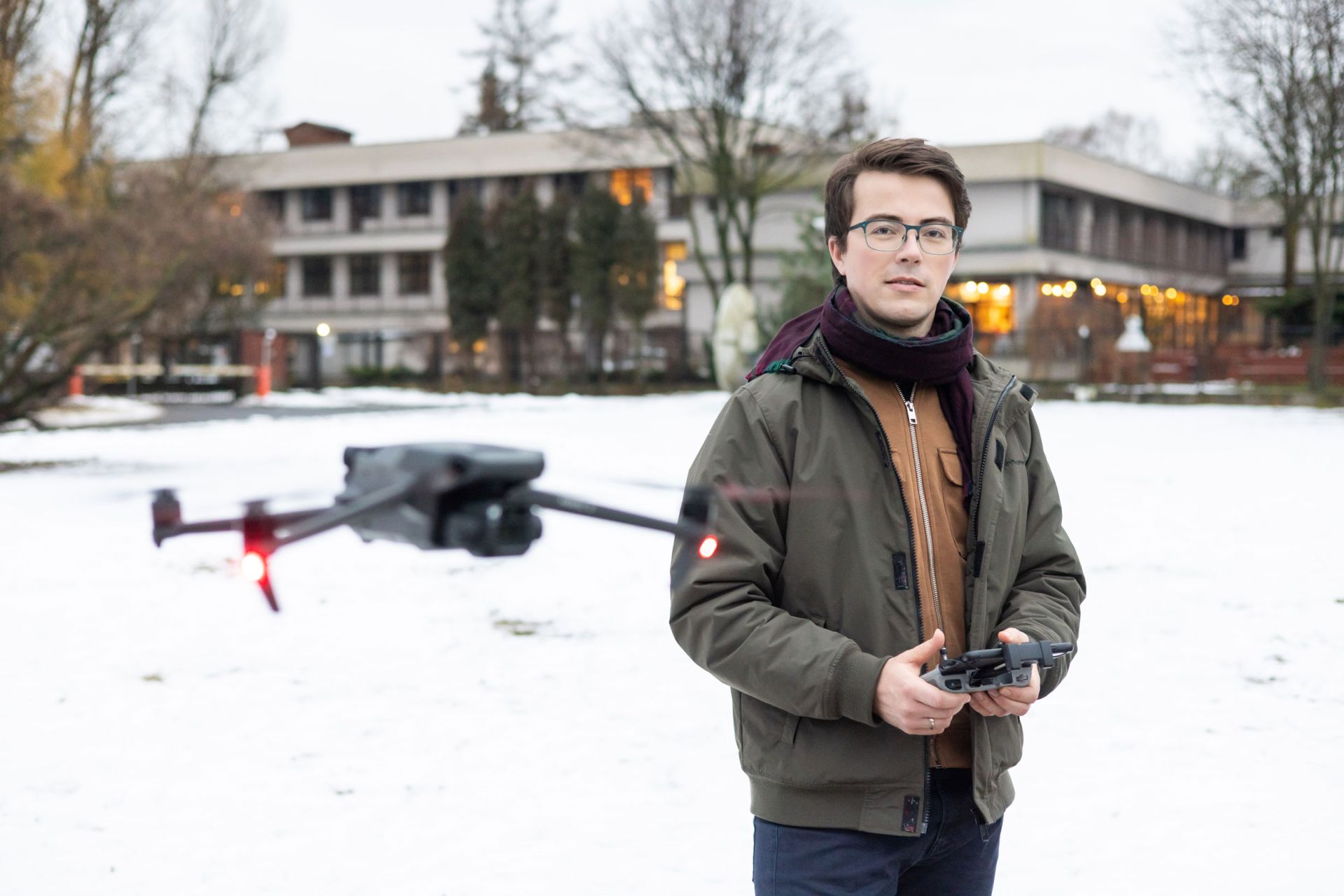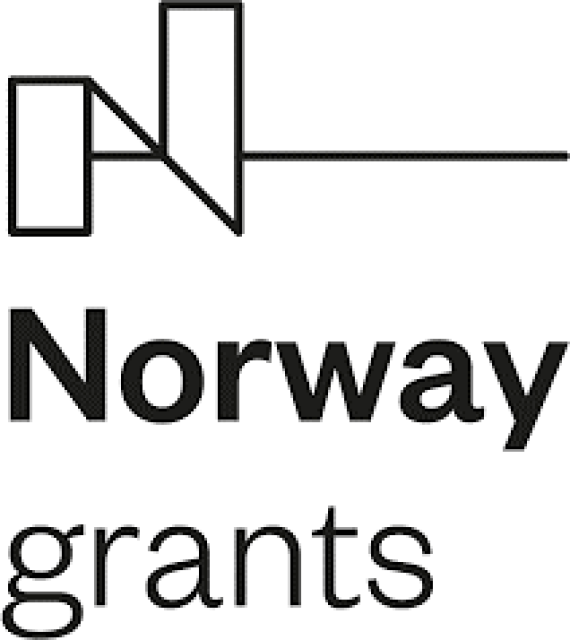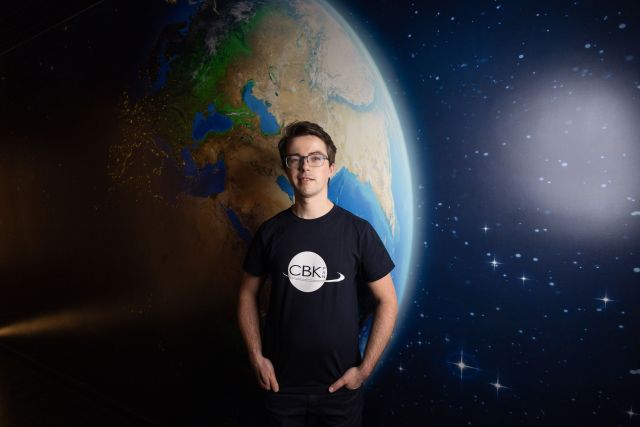Principal Investigator
:
Dr Sam Poppe
The Space Research Centre of the Polish Academy of Sciences
Panel: ST10
Funding scheme
: POLS
announced on
16 March 2020
Terrestrial planetary bodies in our Solar System include Earth, Mars, the Moon, Venus and Mercury. When heated rock melts at depth below the surface of these bodies, magma is produced. This magma ascends through the crust and is either emplaced and solidified at a shallow depth of a few kilometres below the surface, or it erupts at the surface and forms volcanoes. During shallow emplacement, the magma creates space for itself by displacing and deforming the surrounding rocks. This process translates into deformation of the planetary surface, which can be observed through images collected by space missions.
 Dr Sam Poppe, photo by Michał Łepecki
Monitoring seismicity and ground deformation at active volcanic systems on Earth has revealed that dome-shaped surface uplift features can be formed by magma intrusions that spread horizontally and inflate upwards. No active volcanism has been observed on the Moon and Mars, but dome-shaped uplift features there have been interpreted as magma-induced deformation. These features include impact craters that possess uplifted and fractured crater floors. Geological observations at these features are – for the foreseeable future – impossible, and therefore the team of Dr Sam Poppe at the Space Research Centre of the Polish Academy of Sciences is using numerical models to simulate magma emplacement.
Dr Sam Poppe, photo by Michał Łepecki
Monitoring seismicity and ground deformation at active volcanic systems on Earth has revealed that dome-shaped surface uplift features can be formed by magma intrusions that spread horizontally and inflate upwards. No active volcanism has been observed on the Moon and Mars, but dome-shaped uplift features there have been interpreted as magma-induced deformation. These features include impact craters that possess uplifted and fractured crater floors. Geological observations at these features are – for the foreseeable future – impossible, and therefore the team of Dr Sam Poppe at the Space Research Centre of the Polish Academy of Sciences is using numerical models to simulate magma emplacement.
Numerical models can be used to simulate how magma intrusions of different geometries at different depths cause different patterns of ground deformation, or to invert that ground deformation to estimate the magma intrusion characteristics. Most existing numerical models of magma emplacement assume a simplified, elastic behaviour of the deformed host rocks. On Earth, however, geologists have found that rocks around magma intrusions are often deformed and fractured in a much more complex way. Up to now the impact of ignoring that complex deformation on the model results was poorly understood.
 Dr Sam Poppe, photo by Michał Łepecki
From 2021 until 2023, the DeMo-Planet project of Dr Poppe received funding from NCN Poland through the POLS programme to use a new model application to study that complex deformation. By working with colleagues from Ireland, France, Norway and the U.S.A., the research team built and tested a new numerical model that simulates how a magma injection displaces and fractures rocks in the existing two-dimensional Discrete Element Method (DEM). The team verified and calibrated their model at an Earth analogue site close to home. In the Sudetes mountains in Southwest Poland, so-called “melafyr” is extracted to provide building materials for roads and railways. Such quarries in Świerki, Głuszyca and Tłumaczów provide spectacular exposures of 200-250 million-years old trachyandesite magmatic rocks and their overlying rocks. Series of pictures of the rocks were collected with a drone and samples were taken from the surrounding rocks. Observations of fracture networks and rock deformation on the pictures and measurements of the strength of the rock samples were then used to verify and calibrate the numerical model.
Dr Sam Poppe, photo by Michał Łepecki
From 2021 until 2023, the DeMo-Planet project of Dr Poppe received funding from NCN Poland through the POLS programme to use a new model application to study that complex deformation. By working with colleagues from Ireland, France, Norway and the U.S.A., the research team built and tested a new numerical model that simulates how a magma injection displaces and fractures rocks in the existing two-dimensional Discrete Element Method (DEM). The team verified and calibrated their model at an Earth analogue site close to home. In the Sudetes mountains in Southwest Poland, so-called “melafyr” is extracted to provide building materials for roads and railways. Such quarries in Świerki, Głuszyca and Tłumaczów provide spectacular exposures of 200-250 million-years old trachyandesite magmatic rocks and their overlying rocks. Series of pictures of the rocks were collected with a drone and samples were taken from the surrounding rocks. Observations of fracture networks and rock deformation on the pictures and measurements of the strength of the rock samples were then used to verify and calibrate the numerical model.
The team compared the numerical simulations of magma emplacement at the Polish trachyandesite intrusions with simulations on the Moon and Mars, where gravity is lower than on Earth. The research showed that the different strengths of rocks and different gravity on the Moon and Mars lead to differences in the ground deformation patterns there compared to those on Earth. The results of the multidisciplinary DeMo-Planet project can now be used to better interpret deformation features of the planetary surface caused by magma emplacement, and to better understand volcanic hazards on Earth and past volcanism on other terrestrial planetary bodies in our Solar System.
Find out more about DeMo-Planet at cbkpan.pl, sampoppevolcano.wixsite.com.

Project title: DeMo-Planet: Modelling magma intrusions on the Moon, Mars and Earth
Dr Sam Poppe
Dr Sam Poppe studies the structural deformation of volcanoes to better inform the interpretation of volcanic activity on Earth, and reconstruct the volcanic histories of other terrestrial planetary bodies.. His work uses various methods from structural geology, geochemistry, experimental and numerical modelling, and he has worked on active and extinct volcanoes in D.R. Congo, Rwanda, the Comoros and Poland. He has studied or been a fellow at three universities in Belgium and the Pennsylvania State University (U.S.A.). He is also an awarded and passionate science communicator. Since 2021, Dr Poppe is a staff researcher at the Space Research Centre of the Polish Academy of Science.


